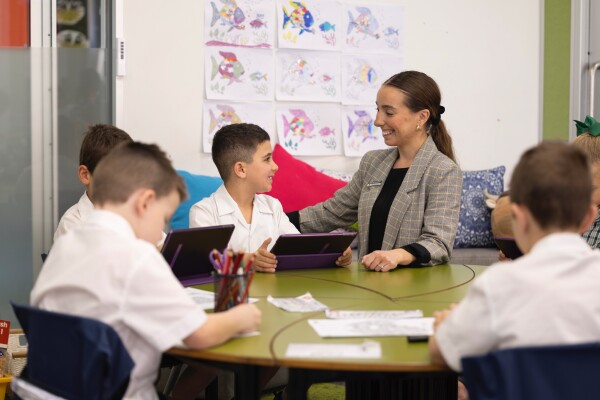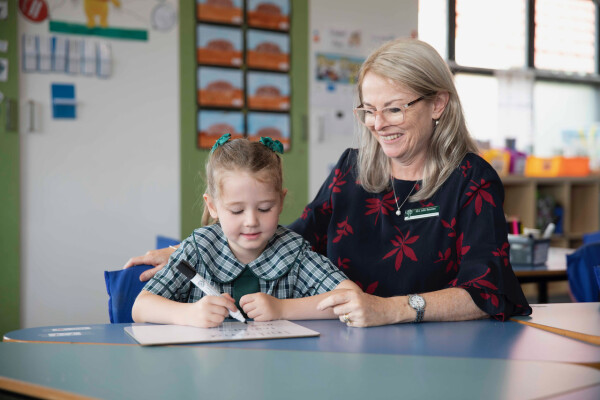
St Patrick's
Port Kembla
Port Kembla
A Catholic Parish Primary School

St Patrick's Catholic Primary School, Port Kembla is registered by the NSW Education Standards Authority (NESA) and is subject to its curriculum requirements.
NESA sets and monitors quality teaching, learning, assessment and school standards. It is also responsible for developing Kindergarten to Year 12 syllabuses for NSW schools.
The NSW curriculum includes the Key Learning Areas (KLAs) of:
English is the Key Learning Area where students develop knowledge, skills and understandings about English language and literature. The outcomes and content in the English K-6 Syllabus are organised in the three strands and are developed through modelling and meaningful practice.
The three strands are:
Children are encouraged through experimentation with concrete materials, discussion, practice and modelling to develop concepts in the following strands:
Instruction in this area involving 'hands on' experimentation in activities which children learn to observe, measure, classify, predict and analyse. Students will explore:
We also incorporate Science, Technology, Engineering and Mathematics (STEM) activities – including robotics – into our Science units. Read more here.
Study in this area focuses on four strands of exploration which include:
HSIE also includes studies of Languages Other Than English (LOTE) such as the Kindergarten to Year 2 study of elementary Japanese Language/Culture.
Lessons are conducted in the context of a weekly program (on Fridays) and co-ordinated by specialist teacher, Mrs Anna Pulbrook.
PDHPE strands include a study of:
Integrated across the KLAs within the scope of classroom programs, the Creative and Practical Arts enable students to gain increasing understanding and accomplishment in:
Work undertaken in each of these areas helps students appreciate the meanings and values that each of the art-forms offer personally, culturally and as forms of communication.
If you have a concern or would like to raise any issue regarding your child’s learning and wellbeing, our staff welcome the opportunity to speak with you about your child.
We ask that you contact your child’s classroom teacher in the first instance. The best way to do this is by:
If the matter is urgent please contact the school office on (02) 4275 5500.
Each KLA includes syllabuses that are inclusive of the learning needs of all students.
Syllabuses identify:
The primary (K-6) curriculum is organised into four Stages of learning:
|
Early Stage 1 |
Kindergarten |
|
Stage 1 |
Year 1 and Year 2 |
|
Stage 2 |
Year 3 and Year 4 |
|
Stage 3 |
Year 5 and Year 6 |
Most students will be working towards the outcomes for their Stage. Some students will be working towards outcomes that are above or below their Stage.
For more information on the NSW curriculum, visit the NESA website.
Did You Know: St Patrick's is committed to working in partnership with families and community in welcoming Aboriginal and Torres Strait Islander students – supporting them to reach their full potential and to embrace their culture and identity. Read more here
 At St Patrick’s, our learning and teaching practices are constantly informed by and responsive to the data we collect and receive from students’ assessments. And it’s working – trends in the data at St Patrick’s show a marked improvement over the past few years in both Literacy and Mathematics.
At St Patrick’s, our learning and teaching practices are constantly informed by and responsive to the data we collect and receive from students’ assessments. And it’s working – trends in the data at St Patrick’s show a marked improvement over the past few years in both Literacy and Mathematics.
Based on assessment data, we have previously taken a focus on Spelling and Writing in our classrooms and staff development. For two years, we engaged the expertise of an Education Officer from the Catholic Education Office who led a strong personal development program for teachers in the area of Phonics and Phonemic Awareness.
Our recent focus has been on Writing, where collaboratively, teachers and children work on Success Criteria to fulfil their Learning Intention for quality writing outcomes. The introduction of an Instructional Coach one day a week at the school allows our teachers to regularly co-plan and co-teach with the Coach, then reflect together on the success and any recommendations to improve further practice.
We also increase student engagement and outcomes with Challenging Maths Tasks. Teachers encourage students to persist, which includes them concentrating, applying themselves, believing that they can succeed and making an effort to learn. We term the tasks and lessons that are likely to foster such actions as challenging, in that they allow for the possibility of sustained thinking, decision making, and some risk taking by the students.